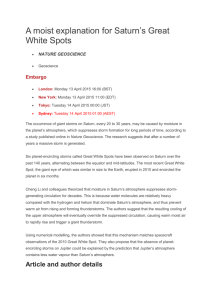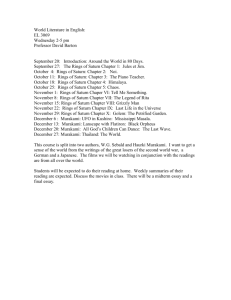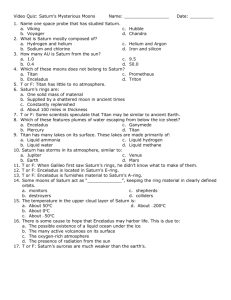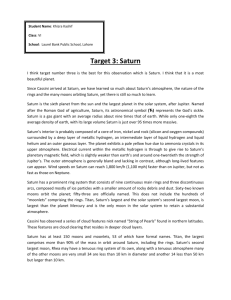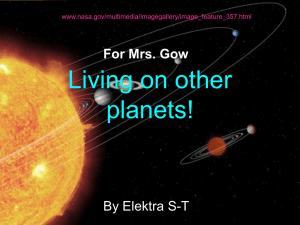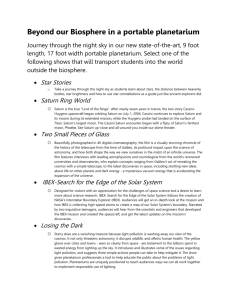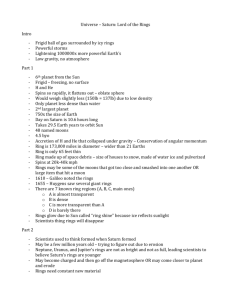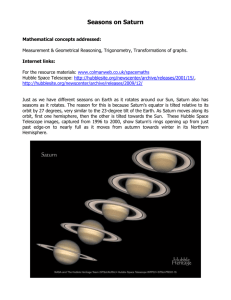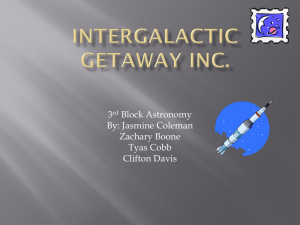tasmia batool
advertisement
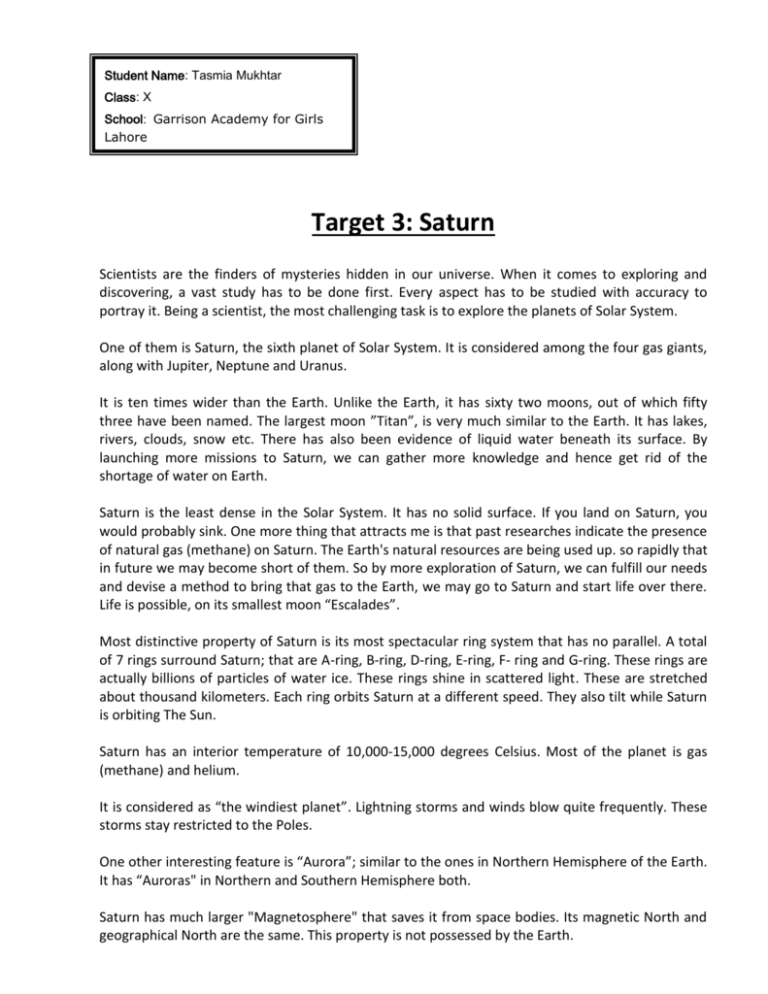
Student Name: Tasmia Mukhtar Class: X School: Garrison Academy for Girls Lahore Target 3: Saturn Scientists are the finders of mysteries hidden in our universe. When it comes to exploring and discovering, a vast study has to be done first. Every aspect has to be studied with accuracy to portray it. Being a scientist, the most challenging task is to explore the planets of Solar System. One of them is Saturn, the sixth planet of Solar System. It is considered among the four gas giants, along with Jupiter, Neptune and Uranus. It is ten times wider than the Earth. Unlike the Earth, it has sixty two moons, out of which fifty three have been named. The largest moon ”Titan”, is very much similar to the Earth. It has lakes, rivers, clouds, snow etc. There has also been evidence of liquid water beneath its surface. By launching more missions to Saturn, we can gather more knowledge and hence get rid of the shortage of water on Earth. Saturn is the least dense in the Solar System. It has no solid surface. If you land on Saturn, you would probably sink. One more thing that attracts me is that past researches indicate the presence of natural gas (methane) on Saturn. The Earth's natural resources are being used up. so rapidly that in future we may become short of them. So by more exploration of Saturn, we can fulfill our needs and devise a method to bring that gas to the Earth, we may go to Saturn and start life over there. Life is possible, on its smallest moon “Escalades”. Most distinctive property of Saturn is its most spectacular ring system that has no parallel. A total of 7 rings surround Saturn; that are A-ring, B-ring, D-ring, E-ring, F- ring and G-ring. These rings are actually billions of particles of water ice. These rings shine in scattered light. These are stretched about thousand kilometers. Each ring orbits Saturn at a different speed. They also tilt while Saturn is orbiting The Sun. Saturn has an interior temperature of 10,000-15,000 degrees Celsius. Most of the planet is gas (methane) and helium. It is considered as “the windiest planet”. Lightning storms and winds blow quite frequently. These storms stay restricted to the Poles. One other interesting feature is “Aurora”; similar to the ones in Northern Hemisphere of the Earth. It has “Auroras" in Northern and Southern Hemisphere both. Saturn has much larger "Magnetosphere" that saves it from space bodies. Its magnetic North and geographical North are the same. This property is not possessed by the Earth. Like Earth, Saturn also has seasonal varieties. Eye-walled clouds have been seen on Saturn. Saturn, in a way is much beneficial to us. If we know more about it we can fulfill our energy needs, our water requirements can be fulfilled. It has 83 times larger area than the Earth. To reach that level much is to be done yet. The main aim in a scientist's life is of knowing more and more. More is to be known about its darker side, which will enable us to get full advantage of the Universe. By knowing more, we can establish space stations on Saturn's Rings, which will further help us to explore distant space and other Galaxies in the Universe. CASSINI SOLSTICE MISSION, can mark a revolution in history by setting its target at Saturn.


